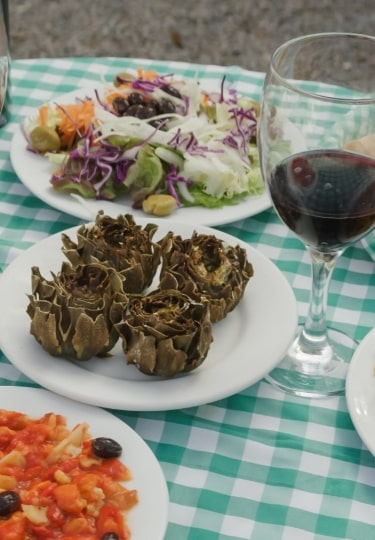Surrounded by rice fields, vineyards, and orchards growing oranges and vegetables, and with the bounty of the sea readily at hand, food in Valencia has a long and exciting tradition, influenced in part by various cultures that have passed through.
You’ll find several dishes here that are associated with the city, not least paella, now ubiquitous all over Spain. But there’s plenty more food in Valencia that’s of local origin.
Many dishes are rice-based, but local menus feature plentiful pasta, noodles, tasty salads, a special kind of mussel, and a whole variety of sweet treats, from pumpkin fritters to fartons, the city’s answer to churros.
Here are 20 specialties to try in Valencia.
Paella
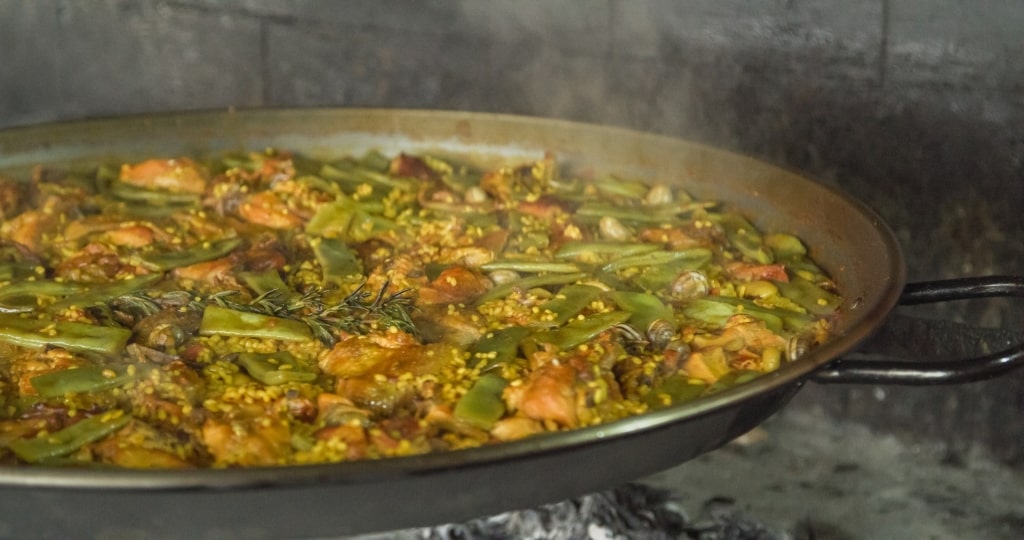
Paella
Paella is synonymous with Valencia, and you’ll find paella restaurants all over this popular European food city. Paella is traditionally made with short-grain rice from the region, stock, and saffron, which gives it a bright yellow color.
Other ingredients of this European dish include chicken, rabbit, butter beans, and vegetables, although there are many variations. Sometimes snails are included, for example.
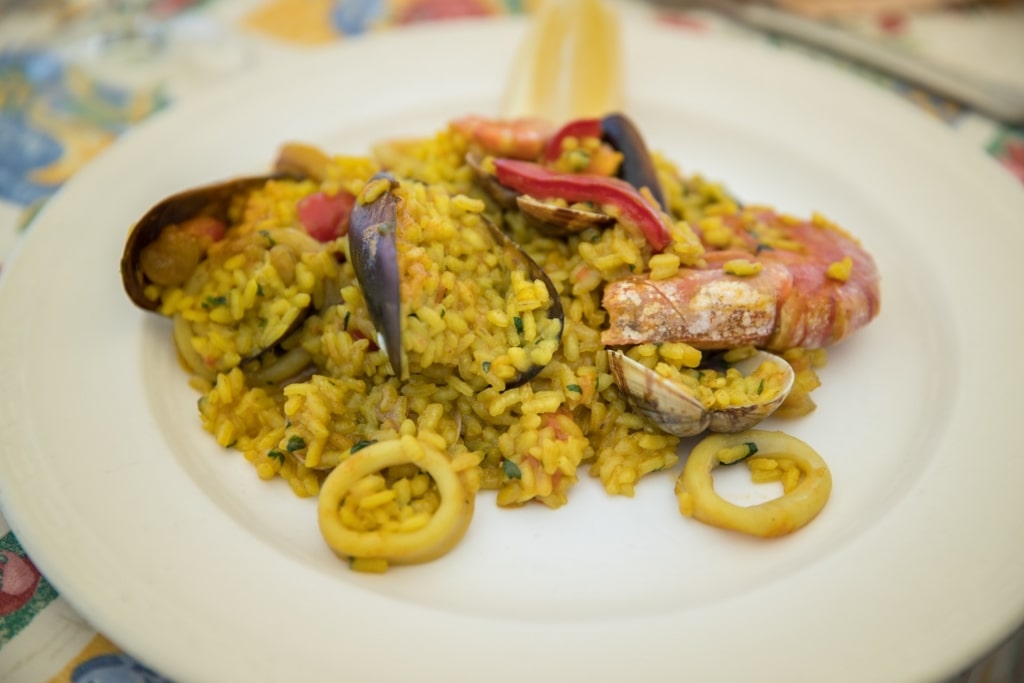
Paella
Seafood paella is rich in clams, shrimp, and mussels, while vegetarian paella comes with all kinds of creativity, featuring artichokes, beans, and red peppers, which add a dash of color.
Paella is cooked in a large, flat-bottomed pan and deliberately not stirred so that a crunchy crust forms at the bottom of the pan, called the soccarat. This is the most prized part of this Spanish dish and is scraped off the pan and served on top of the rice.
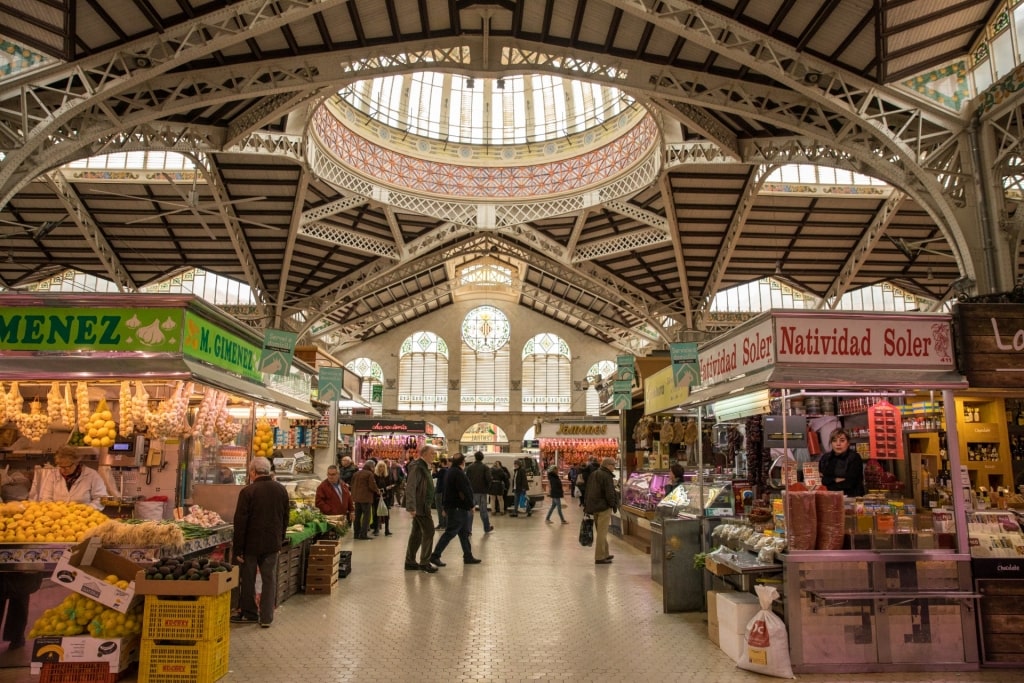
Mercat Central
To buy your own authentic paella pan, head for the magnificent Mercat Central, Europe’s largest produce market.
Pick up a pack of saffron and some special Valencia rice to take home. The two to look for are Bomba or Albufera, both grown locally and protected as originating from the Valencia region.
To try the authentic paella that Spain is known for, and any number of other Valencian rice dishes, head for the superb El Forcat on Calle Roteros. If you want to eat like a local, have paella for lunch; it’s not seen as a dinner dish.
Horchata
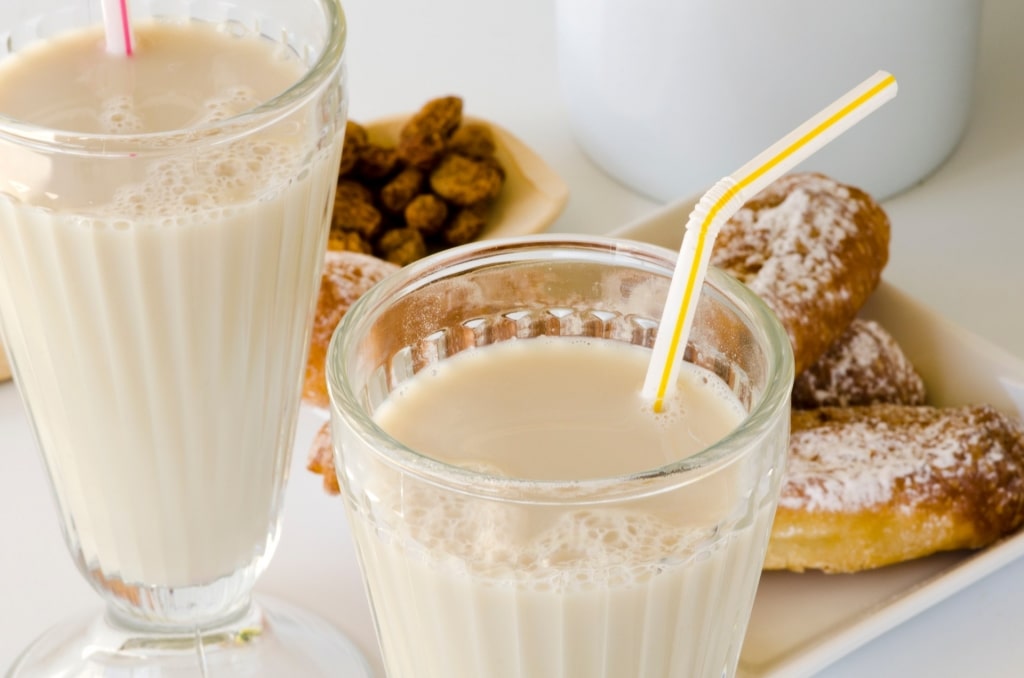
Horchata
Horchata is a popular drink in Valencia. Sweet and creamy, it’s made from the ground chufa nut, also known as tiger nuts. Some 90 percent of the world’s tiger nut production comes from the Valencia area.
Horchata is popular during the summer months and is often served cold. It has a sweet and nutty flavor and is especially refreshing on a hot day.
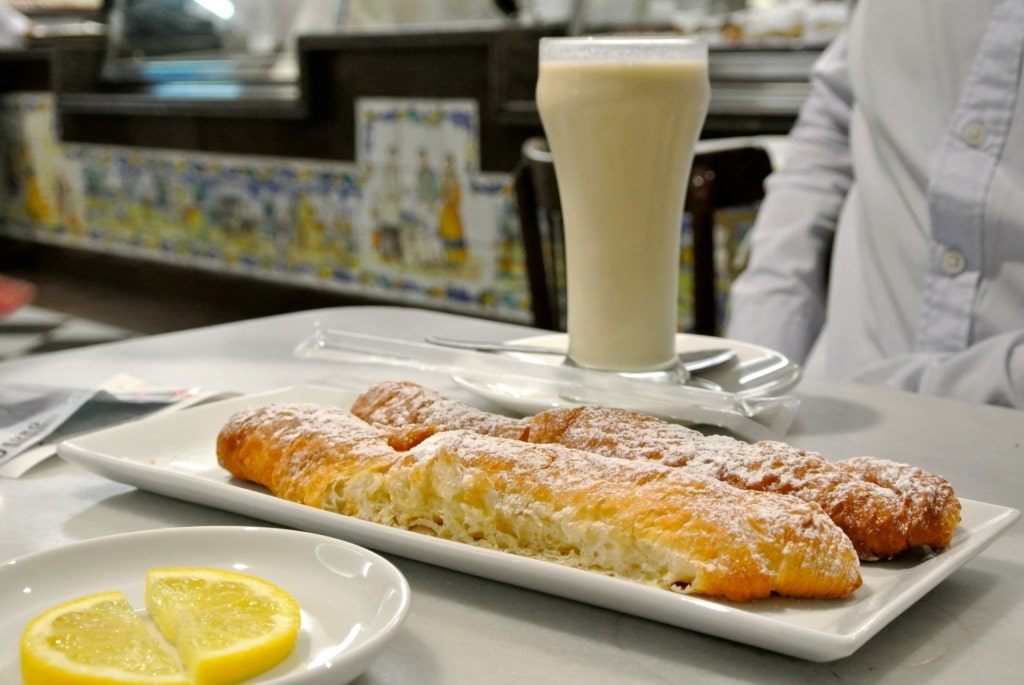
Fartons
Horchata is often served with fartons, a long, thin, sugar-coated pastry that is perfect for dipping into the drink. The pastry is similar to a churro but is lighter and fluffier in texture.
Pick up freshly made fartons in one of the city’s many bakeries. For a truly authentic experience, head for the Horchatería Santa Catalina on Plaza de Santa Catalina in Valencia’s Old Town. This long-running café specializes in hot chocolate and horchata, as well as pastries.
Agua de València

Agua de València
Agua de Valencia is a cocktail made from a combination of fresh orange juice, cava, vodka, and gin, and is often served in large pitchers.
It’s popular in summer and is undeniably refreshing, although the presence of two spirits and the sparkling wine means it’s quite heady, so consume it with care on a hot, sunny day.
Turron
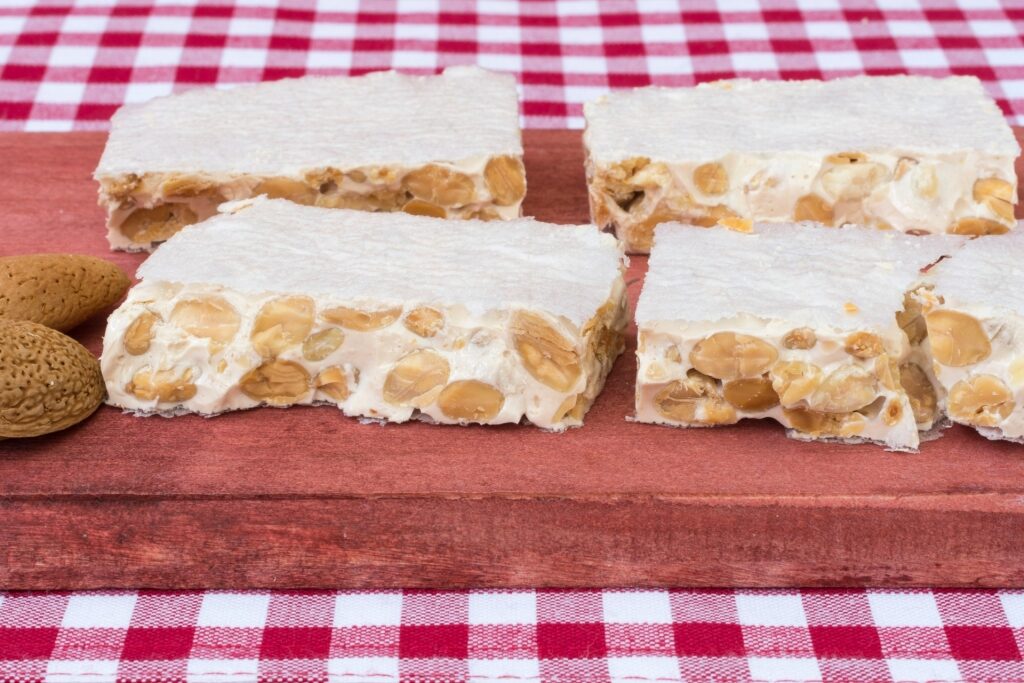
Turron
Typically a Christmas treat, turron is a kind of nougat made from almonds, honey, and sugar and flavored with chocolate, fruit, or more almonds.
You can find it at any time of year, and it’s often served as a dessert in restaurants. Turron makes a great gift to bring home, too.
Arroz al Horno
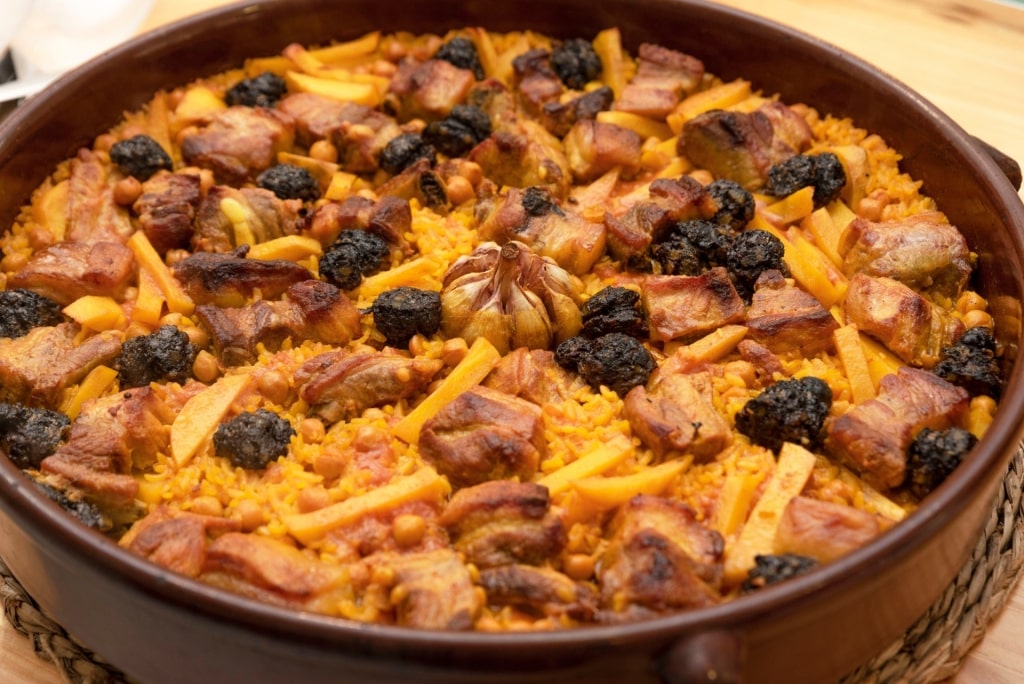
Arroz al horno
Different from paella, this rice-based dish is cooked in a clay pot in the oven. The rice is cooked with sausage, garbanzo beans, and potatoes, creating a rich, hearty dish. You’ll find it served with aioli, or garlic mayonnaise, on the side.
Arroz al Horno is such a classic Valencian dish that it’s even celebrated in a local festival in the nearby town of Xativa.
Fideuà

Fideuà
Fideuà is a derivation of the word fideuada, which means “a lot of noodles”. It’s a similar concept to paella, but made with noodles, usually angel hair, instead of rice.
The dish is typically prepared with seafood, including shrimp, crayfish, squid, and monkfish, cooked in a large pan with tomatoes, saffron, and a pinch of pimentón, Spanish sweet paprika.
Arròs a Banda

Arròs a banda
Similar to paella, this dish of rice and shellfish cooked in fish stock dates back to the days when fishermen would bring home the leftover fish that nobody wanted to buy.
These would be cooked with potato and onion, and the resulting stock would be kept for another day and cooked with rice.
The name of the dish means “rice on the side.” As well as rice, it contains tomatoes, shrimp, fish, and the inevitable saffron to give it that subtle flavor and golden hue.
It’s presented with the rice and the fish served separately; the fish is taken out first, and the rice served on the side, topped with a dollop of aioli.
Esgarraet
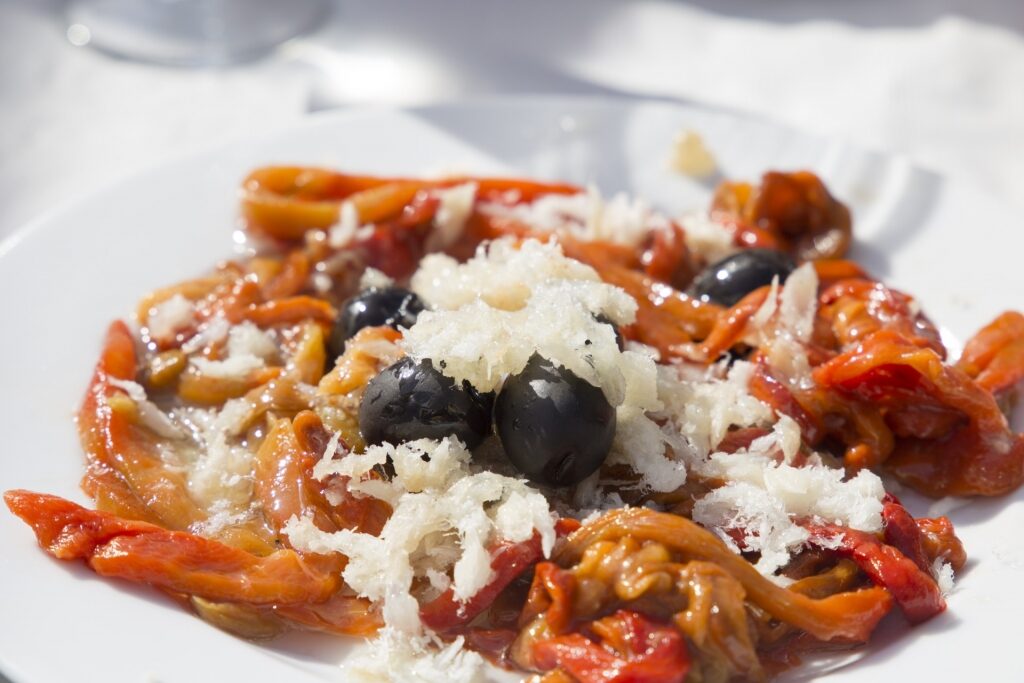
Esgarraet
Served as a tapa, this rich red pepper salad includes cured cod, black olives, lots of garlic, and olive oil. The peppers are grilled and torn into strips, hence the name, which means “torn apart”.
Eat esgarraet with crusty bread as a starter or sharing dish, or as a salad. It’s a delicious dish with surprising depths; the contrast of the sweet peppers and the salty cod is unforgettable.
Escalivada
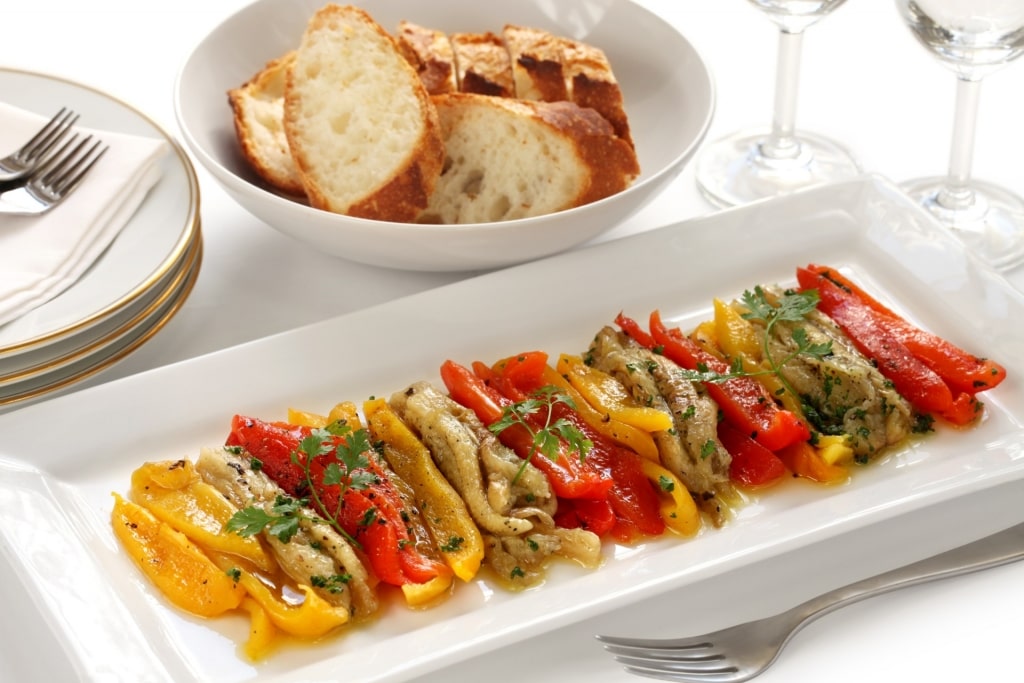
Escalivada
Escalivada is a similar dish to esgarraet and is typical of the Valencia region. Its ingredients are red pepper, eggplant, tomatoes, olive oil, garlic, and onion, all slow-roasted. Sometimes it’s served with cod, in which case you might see it on the menu as espencat.
Coca
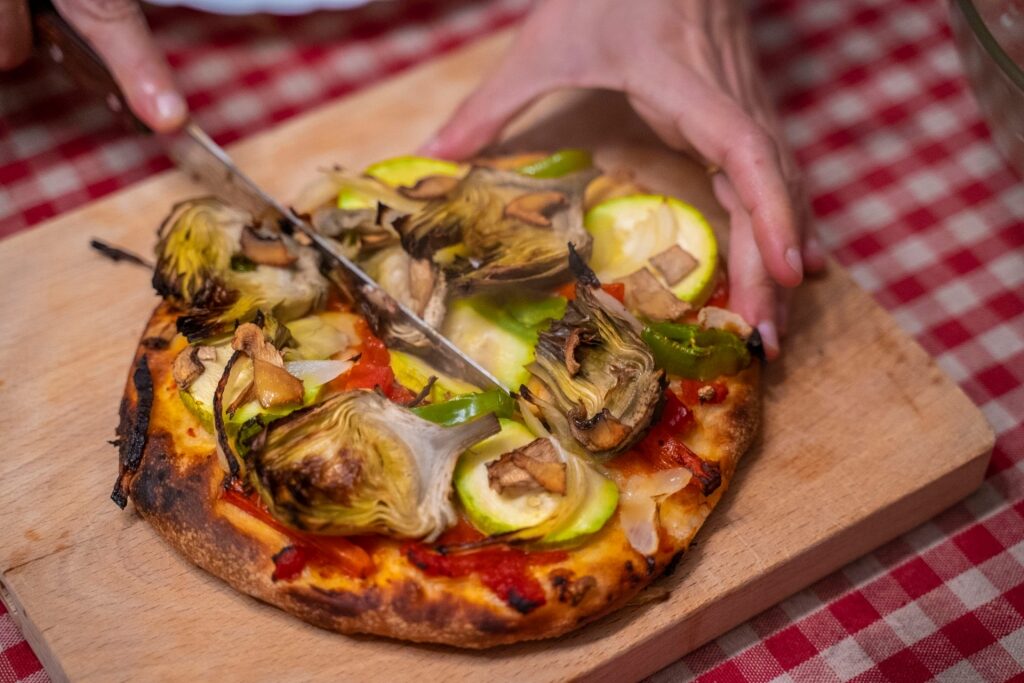
Coca
Coca has many forms and is typical of food in Valencia. It’s a kind of pastry, with sweet and savory versions.
In its sweet form, coca is a sponge cake, flavored with cinnamon and lemon zest, and sometimes with apple, orange juice, or even pumpkin purée added.
Coca de almendra valenciana is an almond variation; almonds have been grown around Valencia since the time of the Arab occupation in the middle ages.
Savory cocas are like small pizzas and have many shapes and flavors. You’ll find them served as a tapa or with aperitifs, or eaten as a mid-morning snack. These pastries are served with toppings of tomatoes, vegetables, pancetta, or salted sardines.
All i Pebre
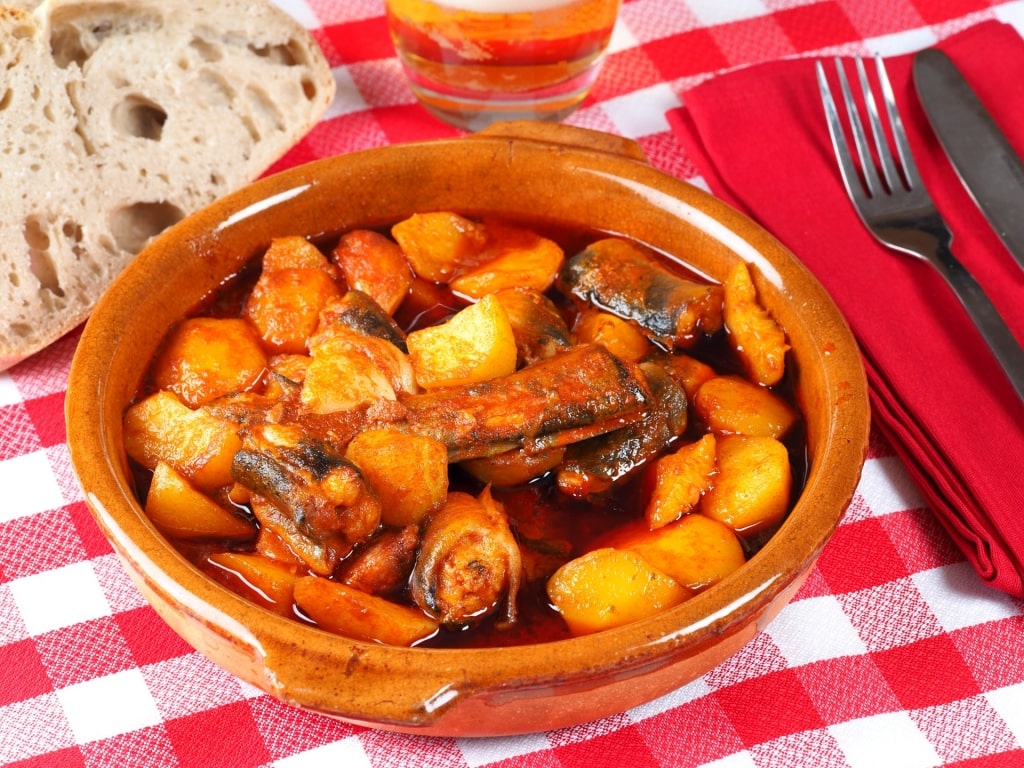
All i pebre
All i pebre means “garlic and pepper” and is another very typical dish of the Valencia area, originating in the Albufera wetlands outside the city. This rich stew includes potatoes, eel (or another type of fish), and large amounts of olive oil, garlic, and paprika.
The whole ensemble is baked in the oven in an earthenware bowl and is served with bread for dipping into the hot, garlicky sauce.
Buñuelos

Buñuelos
These tasty pumpkin fritters are consumed year-round but are associated with Valencia’s Fallas festival, which runs through February and March.
Good buñuelos are light and fluffy and usually served with thick, sweet hot chocolate, perfect for dunking. They’re very simple; the ingredients are simply pumpkin, flour, yeast, and water.
You could be forgiven for thinking Valencians eat a lot of pumpkin as you’ll see them on sale everywhere, but in reality, many of these “calabaza para asar”, or “pumpkins for roasting” end up as buñuelos.

Buñuelos
You’ll see the sweet treats for sale in roadside stalls; locals will eat them as street food for a quick carbohydrate hit.
If you want a traditional Spanish souvenir to take home, pick up a buñolera in the market; this is a special spoon for making the fritters the right size and pushing a hole through the center.
Bollit
Although you’ll find excellent vegetarian paella in any self-respecting restaurant in Valencia, vegetarians can struggle here, as there’s so much sausage and seafood on the menu.
So keep an eye out for bollit, a simple stew typically served in winter, made from potato and carrot, onion, and green beans, cooked with oil and vinegar. Artichokes, chard, and cauliflower might be added to give the dish a bit more interest.
Flan de Calabaza
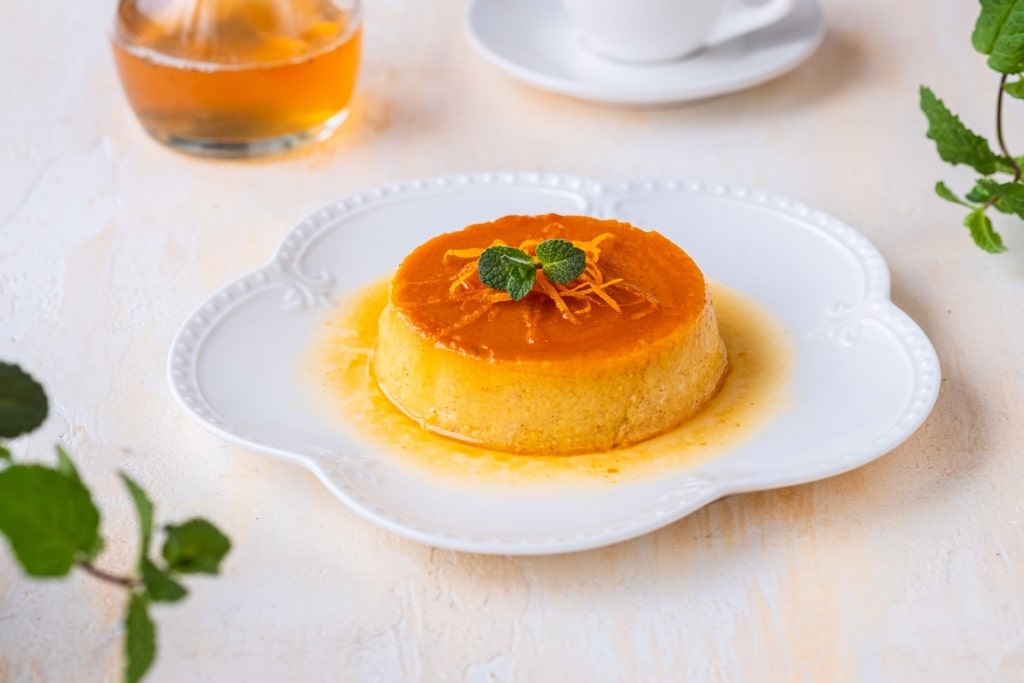
Flan de calabaza
Another popular pumpkin-based dish in Valencia is flan de calabaza, or simply pumpkin flan. This is a sweet custard confection of eggs, condensed and evaporated milk, cinnamon, and, of course, pumpkin.
The custard is cooked on a layer of caramel and served with the sweet sauce poured over the top.
Sobrasada
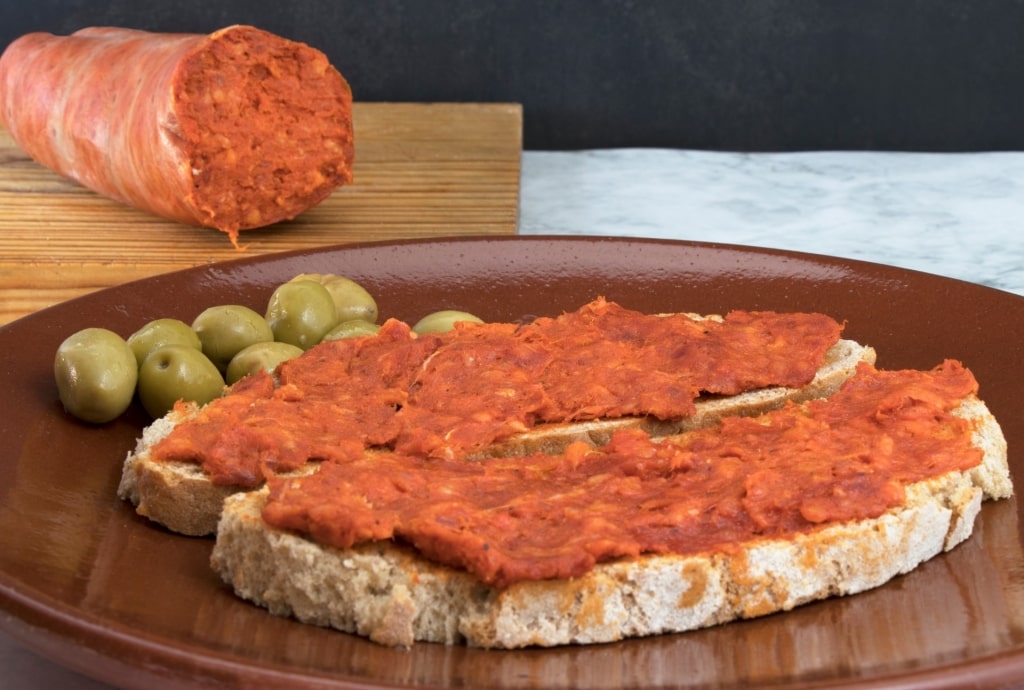
Sobrasada
Although it’s more commonly associated with the nearby Balearic Islands, this rich, spreadable sausage is also popular in Valencia, particularly for breakfast. It’s made from cured pork, red peppers, and paprika, and has a soft, spreadable texture.
Sobrasada is best served on crusty bread, but it’s also used to add punch to stews and as a topping for savory coca. If you want to buy some to take home, be sure to get a sausage with a black pig on the label, which is a sign of quality and authenticity.
Morcilla & Egg Bocadillos
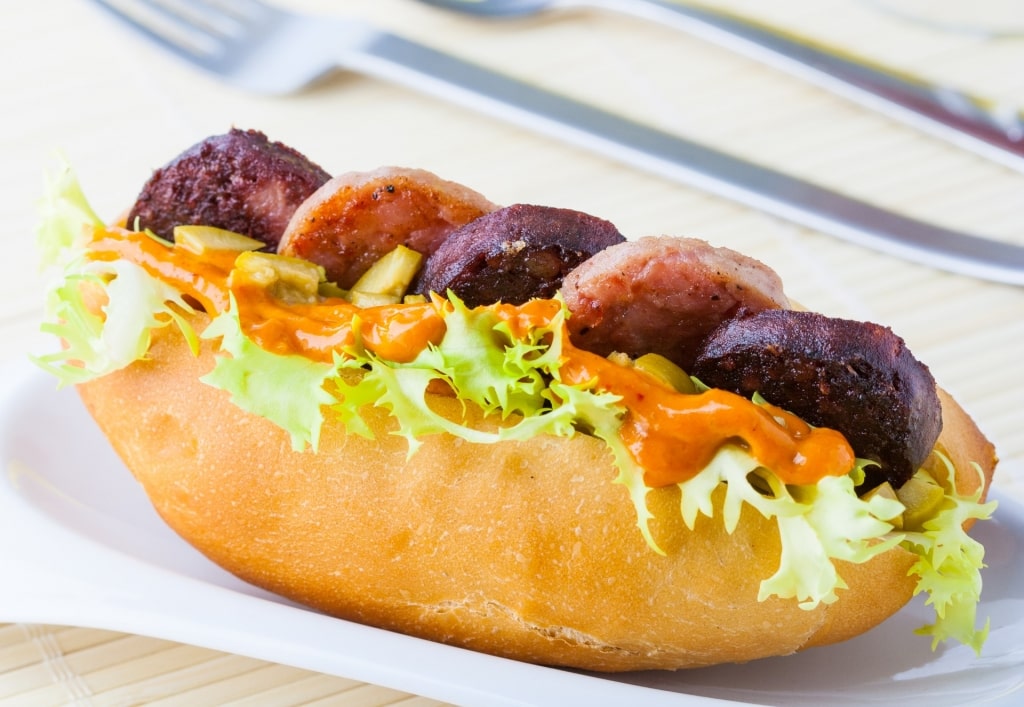
Morcilla and egg bocadillos
Morcilla is a blood sausage made of pork, fat, rice, onions, and blood. While it’s not for the squeamish, this hearty sausage is served in Valencia with scrambled eggs and pickled onions as a bocadillo, or sandwich.
It’s usually eaten as a mid-morning snack (or a hangover cure). You’ll find some of the best morcilla bocadillos at the Mercat Central in the city center.
Clóchinas

Clóchinas
Clóchinas are seasonal mussels unique to the waters around Valencia, and only available from May to September. They’re smaller, saltier, and more robust in flavor than the mussels you usually find around the Mediterranean (appearing as mejillones on a menu in Spanish).
What’s interesting about clóchinas is that they’re only grown in Valencia and nearby Sagunto and are cultivated on floating rafts, which has been the local tradition since the late 19th century. They are harvested according to the cycles of the moon and are protected as Clóchina de Valencia, so you know you’re getting the real thing.
Clóchinas are typically steamed in their own juices with a squeeze of lemon, garlic, and olive oil to create a delicate broth in which you can dunk bread.
Oranges
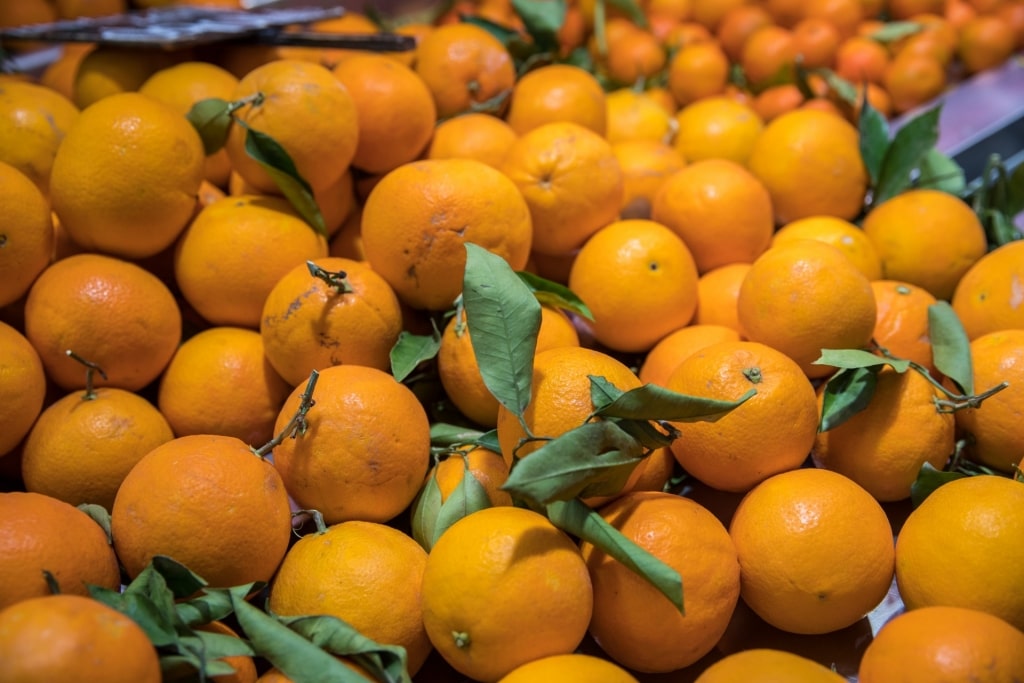
Oranges
Oranges are grown all around Valencia in orchards and in the city itself. You’ll often sense the subtle fragrance of the blossom, or the fruit, on the breeze.
Needless to say, Valencia’s plump, juicy oranges have multiple uses, in cakes, cocktails, and delicious ice cream. Sweet and tangy at the same time, this is a wonderful treat on a hot day.
Calamares a la Romana
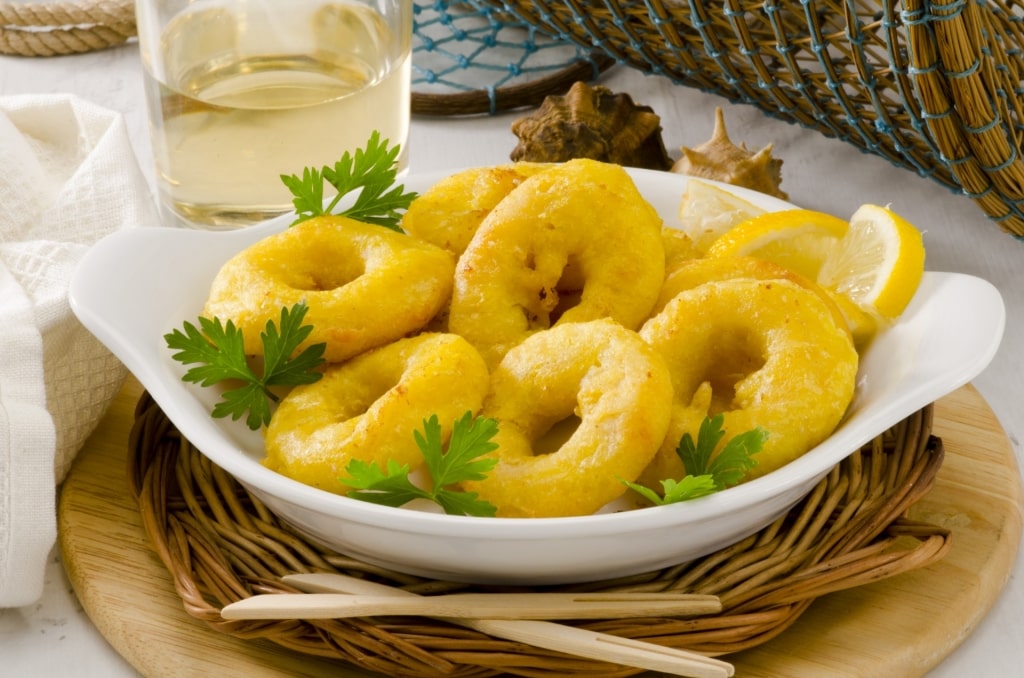
Calamares a la Romana
Typically served as a tapa or an on-the-go snack, this tasty dish consists of squid rings deep-fried in a light batter.
Lots of garlicky aioli makes a great dip, although some people prefer them simply with a squeeze of lemon.
Wine
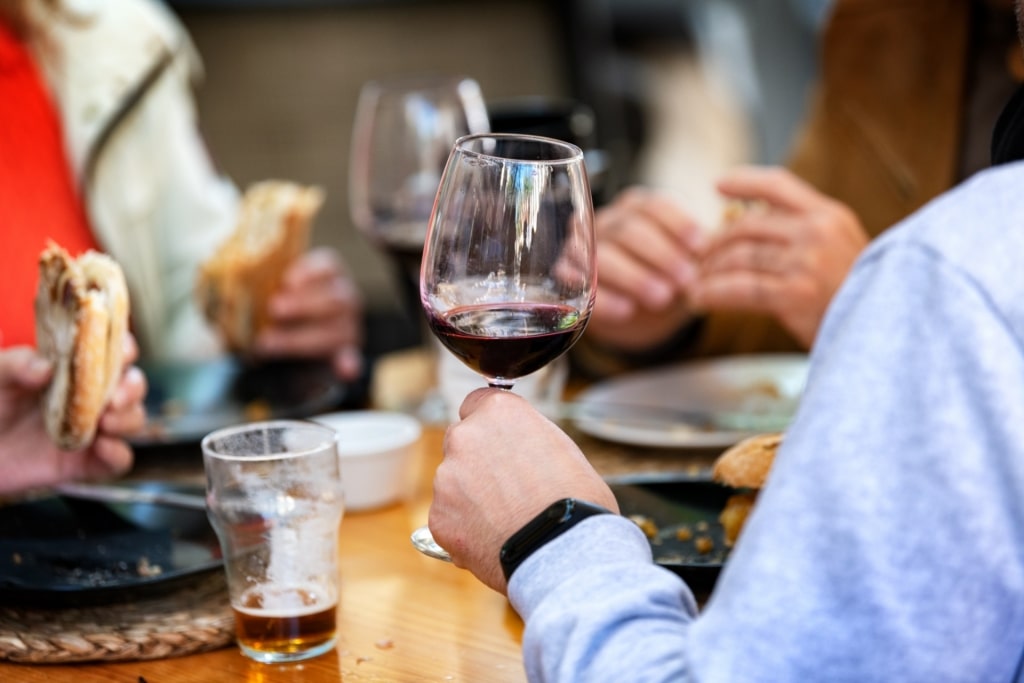
Wine
It’s always good to try local wines in Spain, many of which are not exported. Wine has been cultivated in the Valencia region for more than 1,000 years, although it’s not as well known as many other Spanish wines.
Valencia has several denominaciones de origen: Valencia itself, Alicante, and Utiel-Requena are three of the best known.
You’ll find robust reds made from cabernet sauvignon, merlot, and tempranillo grapes, as well as dry whites grown at altitude in the hills outside the city. You could also try the sweet Moscatel de Valencia dessert wine, produced in the Turia Valley, or a glass of sparkling cava as an aperitif.
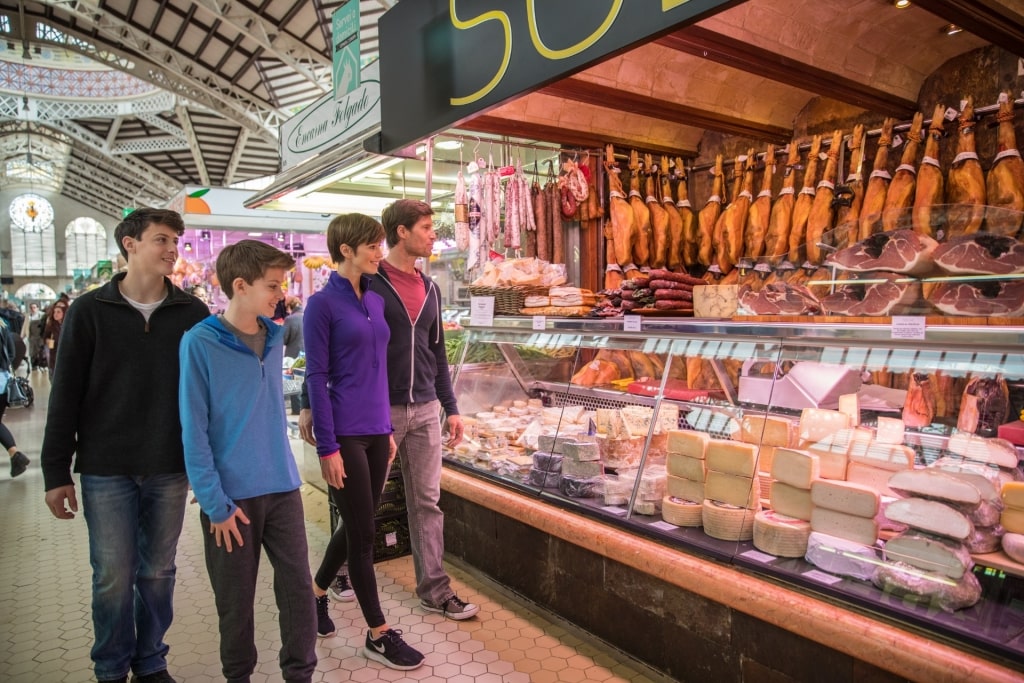
Mercat Central
Ready to savor the delicious food in Valencia? Browse Celebrity’s cruises to Valencia and plan your gourmet adventure.
